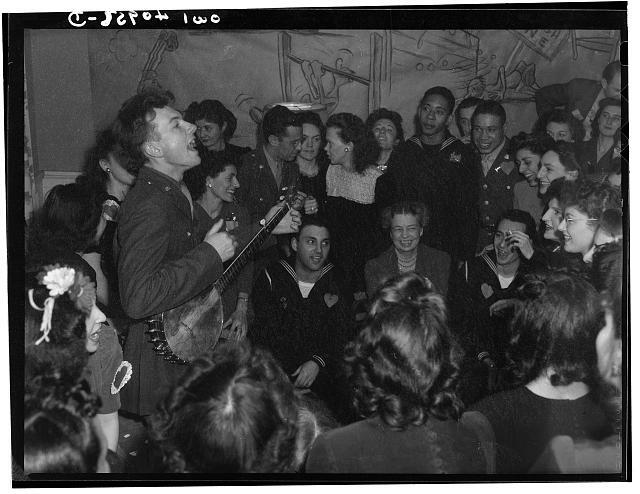Early Folk Revival
Though topical music has certainly been present in North America since the inception of the United States, both on the side of European immigrants and Indigenous peoples, a few additional factors affect that music becoming popular. The music industry was in full swing by the 1920s and music being disseminated as a commodity was now possible.
Additionally, the two artists discussed in this section defined a template for politically minded popular music in the United States. Woody Guthrie and Pete Seeger were both profoundly influential folk singers that built off of similar traditions and became active musicians in the 1930s. Both men admired Joe Hill, a Swedish-American labor activist and musician.
Guthrie and Seeger were active in the Almanac Singers, the first organized group to use folk music as a vehicle for social change. Despite becoming decently popular, the group’s goal to integrate topical music into the early 1900s labor movement ultimately failed and the group disbanded when Guthrie and Seeger left for military service in World War II.
While Guthrie and Seeger shared friendship and similar careers, they are further defined by their differences.

